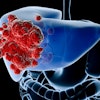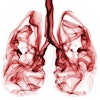
SAN DIEGO - Even though only a small percentage of patients undergoing screening CT colonography (CTC) for the first time have significant extracolonic findings, most of these will require surgical or medical intervention, according to research presented at the American Roentgen Ray Society (ARRS) meeting.
Dr. Perry Pickhardt of the University of Wisconsin and colleagues found that when additional, significant findings -- categorized as E4 in the C-RADS identification system -- are discovered during a patient's first CTC exam, physicians should take note.
"CTC is intended ... to screen for colorectal polyps and cancer, but it's unavoidable that we see the rest of the abdomen and pelvis," he said. "There's ongoing debate regarding how to deal with extracolonic findings. But it would be unethical to disregard them, especially those categorized as E4, which do need further workup or management -- or at least surveillance."
For the study, Pickhardt's group included 7,952 individuals who had first-time CTC during a four-year period. They recorded the incidence and nature of C-RADS E4 findings and performed an electronic medical record review of any additional diagnostic workup and clinical course of disease. The mean age of the study cohort was 57 years, and the group included slightly more women than men (4,277 versus 3,675, respectively).
Cases with unsuspected E4 findings were further assessed with follow-up imaging, biopsy, or other interventions, and an ultimate diagnosis was determined, Pickhardt said.
In all, 2% of patients (159 of 7,952) had findings that were categorized as clinically significant, although 14 patients were either lost to follow-up or deferred further workup, leaving 145 patients.
| Clinically significant extracolonic findings on CTC | |
| Location | Number (%) |
| Adrenal | 2 (1%) |
| Breast | 2 (1%) |
| Gastrointestinal (noncolon) | 16 (10%) |
| Genitourinary | 28 (18%) |
| Gynecological | 14 (9%) |
| Liver | 30 (19%) |
| Lung | 19 (12%) |
| Pancreas | 5 (3%) |
| Vascular | 22 (14%) |
| Lymphadenopathy | 8 (5%) |
| Other | 13 (8%) |
"We've seen this all along, that about 2% of asymptomatic patients have an unsuspected E4 classification," Pickhardt said. "There's a slight increase toward female patients as well, due to gynecological findings."
Of the patients, follow-up diagnostic imaging was recommended for 61%, he said. Results showed that 26% had malignant or potentially malignant tumors, and 35% had findings of previously unknown disease that required medical or surgical treatment, including the following:
- Cirrhosis
- Colovesical fistula
- Early appendicitis
- Endometriosis
- Inflammatory bowel disease
- Oncocytoma
- Polycystic kidney disease
- Significant vascular aneurysm
"We even picked up a couple cases of breast cancer in patients who had had normal mammograms within a month before the CTC exam," he said.
In any case, even though extracolonic findings are rare, it's important to keep an eye out for them, Pickhardt concluded.
"After all, these are healthy, asymptomatic adults in their 50s and 60s," yet they have a significant extracolonic finding, he said.




















